The tracks of railroad history are all over Lancaster County. From the Strasburg Rail Road and the Railroad Museum of Pennsylvania, to bright-red cabooses on display in Lititz and Ephrata, locomotives are ingrained in local culture
But, the big trains aren’t the only ones that can make a big difference
Two holiday model train displays are welcoming visitors this season for more than just spectating. Both events give back to their local community charitably, with one benefiting a county library, and another supporting local food banks
Exhibits like these also transport viewers back to their childhoods around the holidays and can teach lessons about electrical wiring and local history
Here’s more about how these displays came together, and where you can catch them before they leave the station.
- SUZETTE WENGER | Staff Photographer
Train display to benefit the Elizabethtown Public Library
The holiday season is known for bringing out child-like wonder in people — for members of the Elizabethtown organization known as The Train Guys, that spirit takes the form of miniature steam engines.
Craig Coble, one of the founding Train Guys, says the group is made up of people “who had trains as a kid and now look forward to playing with their trains again, but also sharing them with the community.” Coble founded the group alongside Fran Strouse, who still runs the display with Coble.
This month, the group will share their love for trains in their annual model train display to benefit the Elizabethtown Public Library.
Elizabethtown Public Library train display [photos]
Children enjoy watching the train display in the basement of Public Library in Elizabethtown on Thursday, Nov. 30, 2023.
- ANDY BLACKBURN | Staff photographer
The train display in the basement of Public Library in Elizabethtown on Thursday, Nov. 30, 2023.
- ANDY BLACKBURN | Staff photographer
The train display in the basement of Public Library in Elizabethtown on Thursday, Nov. 30, 2023.
- ANDY BLACKBURN | Staff photographer
People press the buttons at the train display in the basement of Public Library in Elizabethtown on Thursday, Nov. 30, 2023.
- ANDY BLACKBURN | Staff photographer
The train display in the basement of Public Library in Elizabethtown on Thursday, Nov. 30, 2023.
- ANDY BLACKBURN | Staff photographer
The train display in the basement of Public Library in Elizabethtown on Thursday, Nov. 30, 2023.
- ANDY BLACKBURN | Staff photographer
The train display in the basement of Public Library in Elizabethtown on Thursday, Nov. 30, 2023.
- ANDY BLACKBURN | Staff photographer
A child enjoy watching the train display in the basement of Public Library in Elizabethtown on Thursday, Nov. 30, 2023.
- ANDY BLACKBURN | Staff photographer
The train display in the basement of Public Library in Elizabethtown on Thursday, Nov. 30, 2023.
- ANDY BLACKBURN | Staff photographer
The train display in the basement of Public Library in Elizabethtown on Thursday, Nov. 30, 2023.
- ANDY BLACKBURN | Staff photographer
The train display in the basement of Public Library in Elizabethtown on Thursday, Nov. 30, 2023.
- ANDY BLACKBURN | Staff photographer
Children enjoy watching the train display in the basement of Public Library in Elizabethtown on Thursday, Nov. 30, 2023.
- ANDY BLACKBURN | Staff photographer
The train display in the basement of Public Library in Elizabethtown on Thursday, Nov. 30, 2023.
- ANDY BLACKBURN | Staff photographer
The train display in the basement of Public Library in Elizabethtown on Thursday, Nov. 30, 2023.
- ANDY BLACKBURN | Staff photographer
Lisa Teach, of Hummelstown, make a point to show her daughter Lilly Teach, 14, the train display in the basement of Public Library in Elizabethtown on Thursday, Nov. 30, 2023.
- ANDY BLACKBURN | Staff photographer
The train display in the basement of Public Library in Elizabethtown on Thursday, Nov. 30, 2023.
- ANDY BLACKBURN | Staff photographer
The train display in the basement of Public Library in Elizabethtown on Thursday, Nov. 30, 2023.
- ANDY BLACKBURN | Staff photographer
The group was inspired by similar displays at holiday bazaars hosted by three Elizabethtown churches in the 1980s. Over the years, the celebrations became fewer. In 1999, with the construction of the local Elizabethtown Public Library underway, some of the churchgoers suggested that members from each church come together to revive the train displays and help fund the library’s creation. With time, that group came to be known as The Train Guys.
The library has long since been completed — but The Train Guys continue to support its presence in the community. Upon entry to the exhibit, the group asks that visitors contribute a minimum of $2, all proceeds of which are donated to the library.
They also fundraise for the library by holding a raffle for a train set, a silent auction for collector’s train items and by selling train cars that are customized for local businesses.
The library also receives direct monetary contributions through a sponsorship program the group began last year. The program encourages local businesses to donate to the library in return for business exposure — each company that contributes gets its information featured on a miniature billboard around the display.
Last year, The Train Guys donated approximately $10,000 to the library, collected through the various streams of fundraising. This year, the group aims to top last year’s total.
All of the display’s materials, including the tables, train tracks and transformers, are provided by The Train Guys’ members.
Since the building’s completion, The Train Guys’ display has been showcased in a large meeting room on the lower level of the library itself. In its early years the display started out small, taking up only a portion of the room. Now it’s nearly reached the room’s capacity, encompassing a platform of 18-by-65 feet.
“If they had given us the Fellowship Hall, we would have filled it,” Coble said.
Despite testing the limits of the space, the group continues to find new ways to grow and alter its design. This year, they are eager to introduce a new stretch of the display that extends down the hallway leading to the main display room. Intended to entertain visitors when a line forms, the section features circus-themed trains and attractions.
The display currently boasts 20 moving trains — from contemporary, radio-powered locomotives to 100-year-old railroad cars. It also features 50 push buttons that initiate moving trains and accessories. To reach this ambitious goal by December, the crew starts planning the exhibit as early as Oct. 15.
According to Don Dorwat, who has been with the group for five years, the display opened to the public on Nov. 30. For this special debut, The Train Guys invited first responders and their family members to be the first to experience the display, free of charge.
“The best part of it all is when those kids come through the door, just the expression on their faces is absolutely amazing,” said John Monti, President of the Masonic Village and Elizabethtown model railroad club, which collaborates with The Train Guys during December. “It gives us a lot of joy to be able to give this experience to these kids.”
Beyond being a source of joy for visitors, Strause says the display can be educational, as well.
Interspersed amongst the display are various small-scale replicas of historical Elizabethtown buildings, such as the Peach Alley schoolhouse and the town’s original firehouse. Alongside each model are original photos of the actual buildings, giving attendees a taste of local history.
“This display can be a tremendous teaching tool,” Coble said. “It can teach you about the evolution of manufacturing of toys, real railroads, electric wiring circuits and mechanical devices.”
Not far down the road, the Masonic Village has a train display of its own, located in the village’s club building, that operates from October to April. In an effort to collaborate with The Train Guys’ display, the two organizations provide a shuttle the first three Saturdays of December to transport visitors from one exhibit to another, free of charge. Two more chances to ride the shuttle remain: Dec. 9, and Dec. 16.
The Masonic Village display is arranged by the MV & E model railroad club — an organization of roughly 50 members dating back 26 years — and features 1,600 feet of tracks and seven different train gauges.
Train display will take place December 9, 10, 16, 17, 23 from 1 P.M. to 4 P.M, at West Willow United Methodist Church
Train display to benefit the Solanco Neighborhood Ministries Food Bank
About 25 miles south of Elizabethtown, another group has organized its own model train display for another good cause.
For Willow Street resident Al Strausner, the holiday season comes in the form of miniature, snap-together plastic buildings painted fire truck red, sky blue and sunflower yellow.
Created by the Philadelphia-based Bachmann Trains Company since 1947, the “Plasticville'' houses are intended to appear with model train displays and come in the form of churches and drive-in restaurants, ranch-style houses and schoolhouses. During Strausner’s childhood in the ’50s and ’60s, making such displays was a favorite pastime.
Now a decades-long collector of the vintage treasures, he uses the buildings as a way to give back to the community around the holidays.
This year marks the fifth year that Strausner and his 16-year-old grandson, Matthew Palmeri, will transform part of the West Willow United Methodist Church into a display of dozens of Plasticville houses and two functioning trains that spans more than 12-by-20 feet.
Throughout his childhood Palmeri has followed in his grandfather’s footsteps, adopting a similar appreciation for Plasticville and model trains. As their mutual passion grew, the pair was inspired to build a display that could share the items they loved collecting together with the community.

Al Strausner of the West Willow United Methodist Church in Willow Street, cuts a piece of fake grass that sits under the Plasticville buildings on the train display he has been setting up for decades on Monday, Dec. 4, 2023.
- SUZETTE WENGER | Staff Photographer

Al Strausner of the West Willow United Methodist Church in Willow Street, holds one of the two engines that runs on the train display he has been setting up for decades in the basement of the church on Monday, Dec. 4, 2023.
- SUZETTE WENGER | Staff Photographer

A train display of the Circus being unloaded from the railroad tracks in town set up by Al Strausner of the West Willow United Methodist Church in Willow Street, waits for viewers in the basement of the church on Monday, Dec. 4, 2023.
- SUZETTE WENGER | Staff Photographer
Model train display at Willow Street United Methodist Church [photos]
Willow Street model train enthusiast Al Strausner – along with him from family and friends – organizes an annual train display at West Willow United Methodist Church to benefit Solanco Neighborhood Ministries Food Bank. The 2023 display opens Dec. 9 and continues through Dec. 30.
Al Strausner of the West Willow United Methodist Church in Willow Street, works on a corral for horses on the train display he has been setting up for decades on Monday, Dec. 4, 2023.
- SUZETTE WENGER | Staff Photographer
Al Strausner of the West Willow United Methodist Church in Willow Street, works on the airport building on the train display he has been setting up for decades on Monday, Dec. 4, 2023.
- SUZETTE WENGER | Staff Photographer
Al Strausner of the West Willow United Methodist Church in Willow Street, works on the airport building on the train display he has been setting up for decades on Monday, Dec. 4, 2023.
- SUZETTE WENGER | Staff Photographer
Al Strausner of the West Willow United Methodist Church in Willow Street, cuts a piece of fake grass that sits under the Plasticville buildings on the train display he has been setting up for decades on Monday, Dec. 4, 2023.
- SUZETTE WENGER | Staff Photographer
Al Strausner of the West Willow United Methodist Church in Willow Street, holds one of the two engines that runs on the train display he has been setting up for decades in the basement of the church on Monday, Dec. 4, 2023.
- SUZETTE WENGER | Staff Photographer
This is one of two engines that Al Strausner of the West Willow United Methodist Church in Willow Street, uses on the train display he has been setting up for decades at the church on Monday, Dec. 4, 2023.
- SUZETTE WENGER | Staff Photographer
A train display set up by Al Strausner of the West Willow United Methodist Church in Willow Street, waits for viewers in the basement of the church on Monday, Dec. 4, 2023.
- SUZETTE WENGER | Staff Photographer
A train display set up by Al Strausner of the West Willow United Methodist Church in Willow Street, waits for viewers in the basement of the church on Monday, Dec. 4, 2023.
- SUZETTE WENGER | Staff Photographer
A train display set up by Al Strausner of the West Willow United Methodist Church in Willow Street, waits for viewers in the basement of the church on Monday, Dec. 4, 2023.
- SUZETTE WENGER | Staff Photographer
A train display of Plasticville buildings set up by Al Strausner of the West Willow United Methodist Church in Willow Street, waits for viewers in the basement of the church on Monday, Dec. 4, 2023.
- SUZETTE WENGER | Staff Photographer
A train display of the Plasticville fire house set up by Al Strausner of the West Willow United Methodist Church in Willow Street, waits for viewers in the basement of the church on Monday, Dec. 4, 2023.
- SUZETTE WENGER | Staff Photographer
A train display of the Plasticville fire house set up by Al Strausner of the West Willow United Methodist Church in Willow Street, waits for viewers in the basement of the church on Monday, Dec. 4, 2023.
- SUZETTE WENGER | Staff Photographer
A train display of the Plasticville Frosty Bar set up by Al Strausner of the West Willow United Methodist Church in Willow Street, waits for viewers in the basement of the church on Monday, Dec. 4, 2023.
- SUZETTE WENGER | Staff Photographer
A train display of the Plasticville Hospital set up by Al Strausner of the West Willow United Methodist Church in Willow Street, waits for viewers in the basement of the church on Monday, Dec. 4, 2023.
- SUZETTE WENGER | Staff Photographer
A train display of the Plasticville church set up by Al Strausner of the West Willow United Methodist Church in Willow Street, waits for viewers in the basement of the church on Monday, Dec. 4, 2023.
- SUZETTE WENGER | Staff Photographer
A train display of the Hotel Plasticville set up by Al Strausner of the West Willow United Methodist Church in Willow Street, waits for viewers in the basement of the church on Monday, Dec. 4, 2023.
- SUZETTE WENGER | Staff Photographer
A train display of the Plasticville airport set up by Al Strausner of the West Willow United Methodist Church in Willow Street, waits for viewers in the basement of the church on Monday, Dec. 4, 2023.
- SUZETTE WENGER | Staff Photographer
A train display of downtown Plasticville set up by Al Strausner of the West Willow United Methodist Church in Willow Street, waits for viewers in the basement of the church on Monday, Dec. 4, 2023.
- SUZETTE WENGER | Staff Photographer
A display of a clown set up by Al Strausner of the West Willow United Methodist Church in Willow Street, waits for viewers in the basement of the church on Monday, Dec. 4, 2023.
- SUZETTE WENGER | Staff Photographer
A train display of the Circus in town set up by Al Strausner of the West Willow United Methodist Church in Willow Street, waits for viewers in the basement of the church on Monday, Dec. 4, 2023.
- SUZETTE WENGER | Staff Photographer
A train display of the Circus in town set up by Al Strausner of the West Willow United Methodist Church in Willow Street, waits for viewers in the basement of the church on Monday, Dec. 4, 2023.
- SUZETTE WENGER | Staff Photographer
A train display of the Circus characters in town set up by Al Strausner of the West Willow United Methodist Church in Willow Street, waits for viewers in the basement of the church on Monday, Dec. 4, 2023.
- SUZETTE WENGER | Staff Photographer
A train display of the Circus in town set up by Al Strausner of the West Willow United Methodist Church in Willow Street, waits for viewers in the basement of the church on Monday, Dec. 4, 2023.
- SUZETTE WENGER | Staff Photographer
A train display of the Circus being unloaded from the railroad tracks in town set up by Al Strausner of the West Willow United Methodist Church in Willow Street, waits for viewers in the basement of the church on Monday, Dec. 4, 2023.
- SUZETTE WENGER | Staff Photographer
A train display of the Circus in town set up by Al Strausner of the West Willow United Methodist Church in Willow Street, waits for viewers in the basement of the church on Monday, Dec. 4, 2023.
- SUZETTE WENGER | Staff Photographer
A train display of the Circus in town set up by Al Strausner of the West Willow United Methodist Church in Willow Street, waits for viewers in the basement of the church on Monday, Dec. 4, 2023.
- SUZETTE WENGER | Staff Photographer
After their first year of successfully holding the display, Strausner and Palmeri realized the project could provide more than just entertainment for visitors. Looking for a way to use the display to give back, they decided to start collecting donations for the Solanco Neighborhood Ministries Food Bank, whose work Strausner had become familiar with through volunteer work over the years. Collections from the display have been donated to the organization for the past four years.
The nonprofit organization located in Quarryville has served local residents since 2012, with a goal of combating poverty in southern Lancaster County. In addition to the food bank, they provide services such as free weekend meals for K-12 students who qualify and free Christmas meals.
“I think that the people in our community enjoy seeing our display,” Palmeri said. “I also believe that our display can positively affect the people of surrounding communities because we are able to donate to the food banks, helping people to not go hungry.”
Upon entry to their display, Strausner encourages visitors to contribute nonperishable food items or a cash donation for the food bank. A portion of proceeds are also donated to the Conestoga Community Food Bank.
Last year’s display collected approximately 375 nonperishable food items and $500 in donations that was split between the two organizations.
With help from friends, Strausner’s wife and their daughter, the crew begins creating the exhibit on Dec. 2 with a tight deadline of Dec. 9, their grand opening. It takes hours of work to set up the display tables, arrange the tracks, and accessorize the platforms with houses, trees and tiny people, which is essential to “mak[ing] it into a village instead of just buildings.”
Strausner has seen many different types of visitors connect with the display, from those who have their own memories of train displays and Plasticville houses from when they were kids and younger generations, too, for whom the display might one day be a holiday memory of their own.
“Kids come in all ages when they come to see the train layout,” Strausner said. “The neat thing to hear is the stories that you have of older folk telling us what [Plasticville houses] they had before.”
Success! An email has been sent to with a link to confirm list signup.
Error! There was an error processing your request.

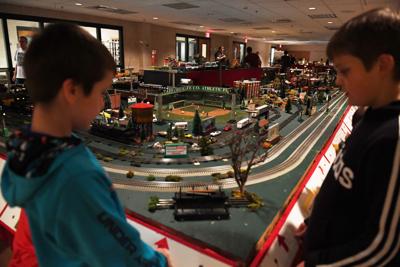
![Holiday open house tradition is back in Manheim Township [photos]](https://bloximages.newyork1.vip.townnews.com/lancasteronline.com/content/tncms/assets/v3/editorial/1/ba/1bacaf60-9066-11ee-a9aa-8779d5676b38/656d059167ec8.preview.jpg?crop=1441%2C885%2C2%2C0&resize=150%2C92&order=crop%2Cresize)
![Season of (Mount) Joy at 25th Winterfest [photos]](https://bloximages.newyork1.vip.townnews.com/lancasteronline.com/content/tncms/assets/v3/editorial/4/69/46984b64-9168-11ee-bb6d-33ff82d110d7/656bb9e235c77.image.jpg?resize=150%2C90)

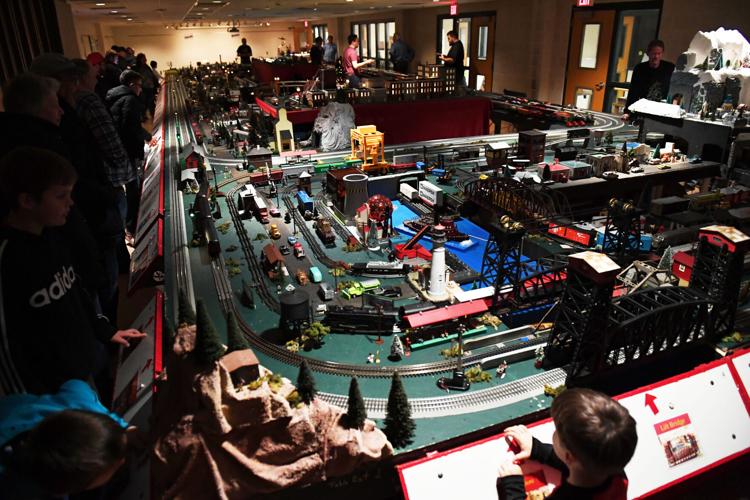
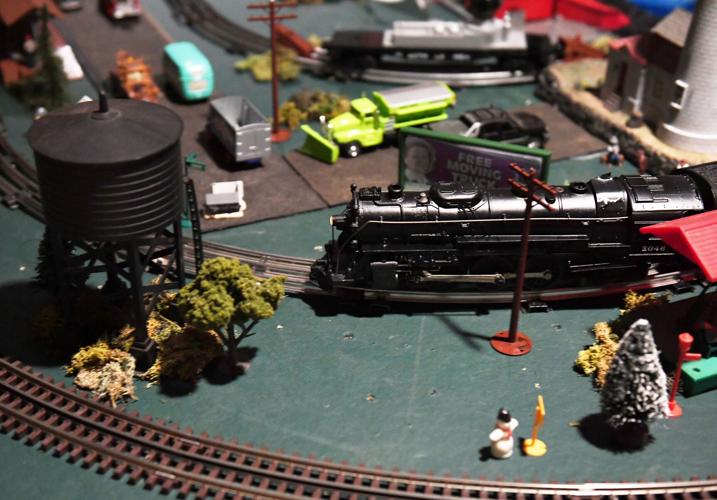
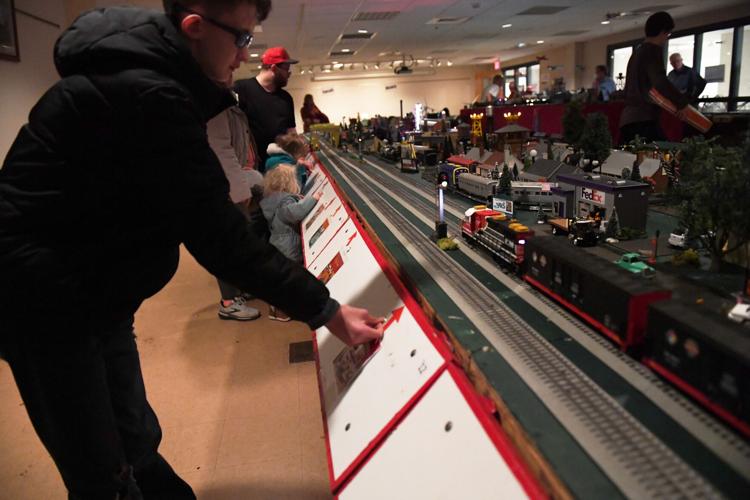

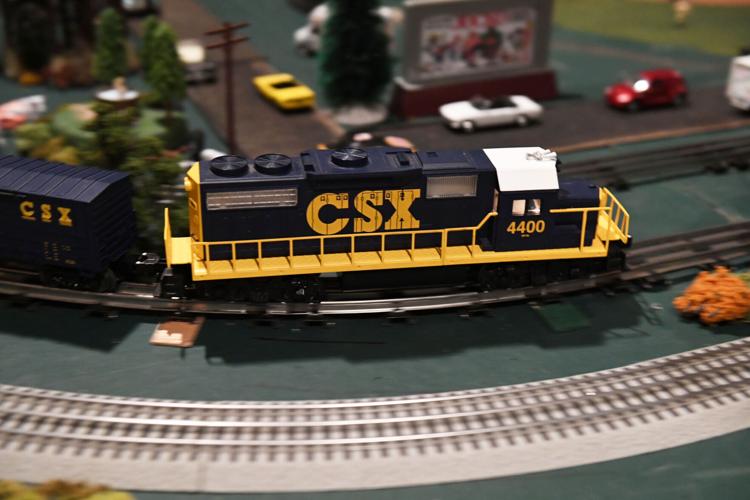



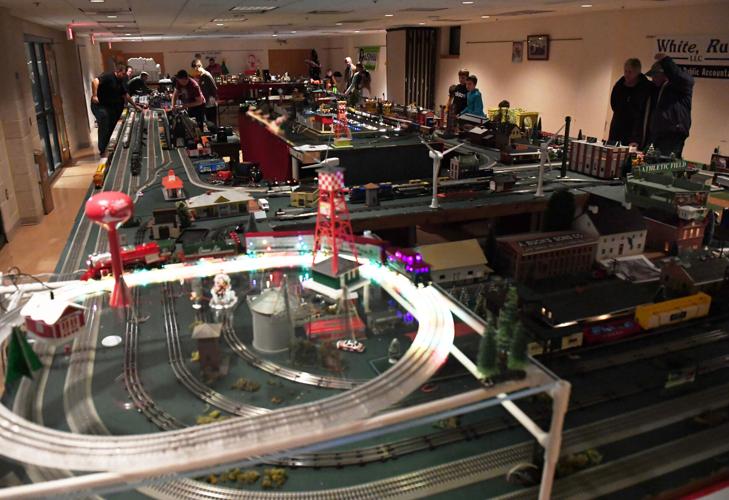
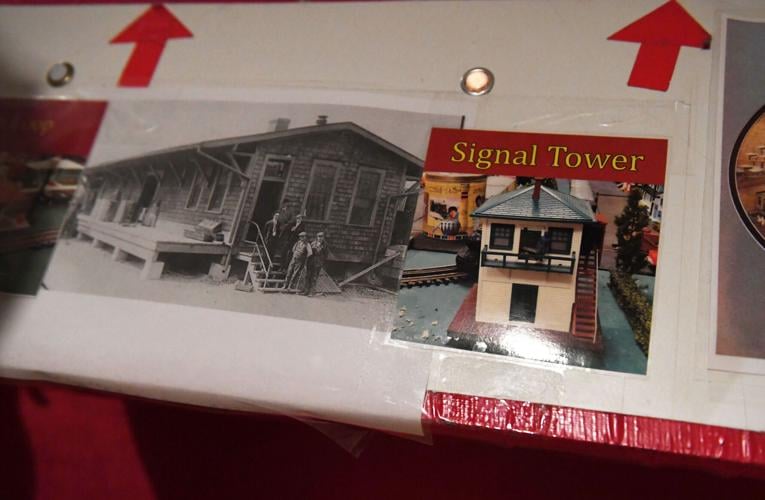
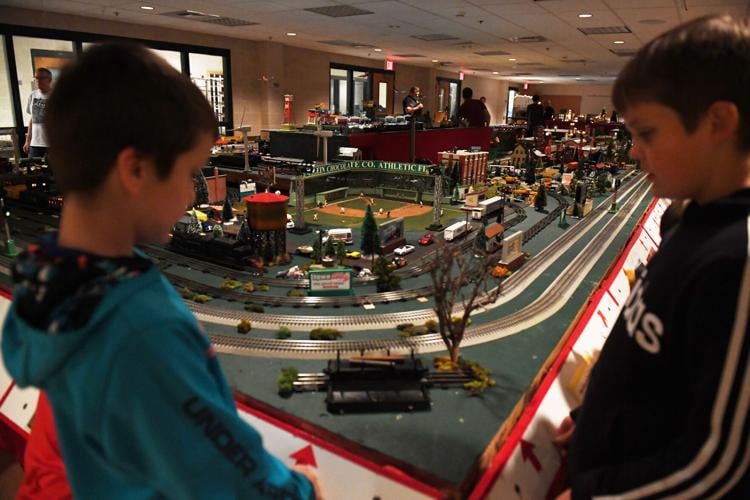





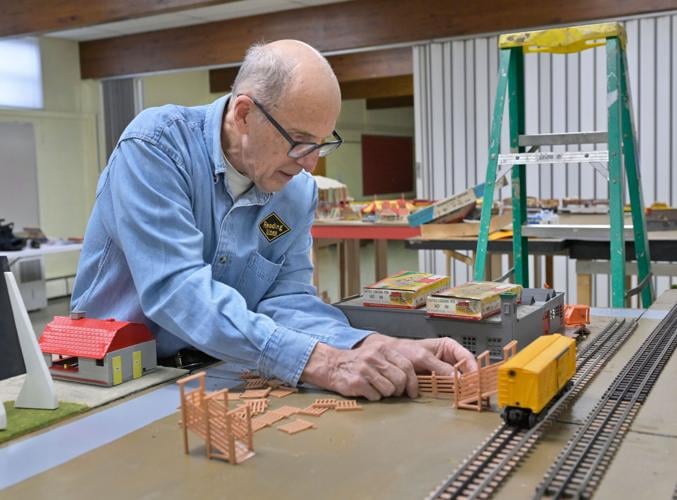

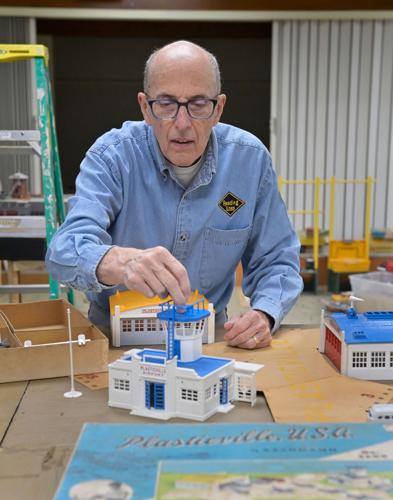





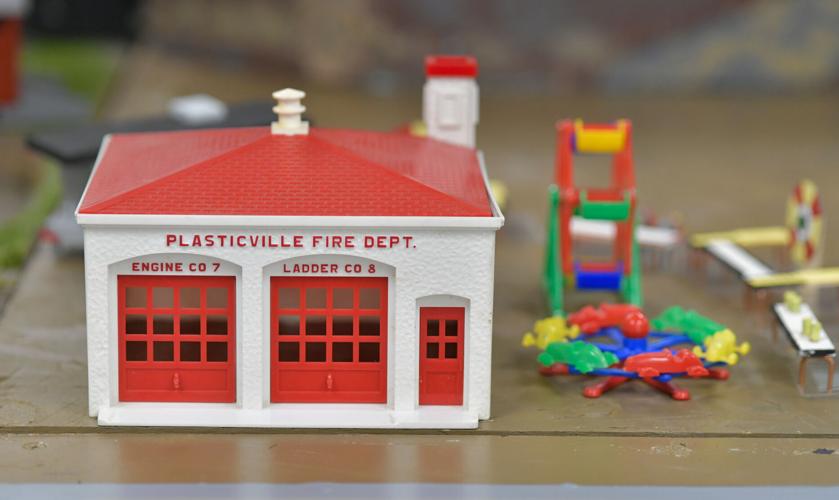
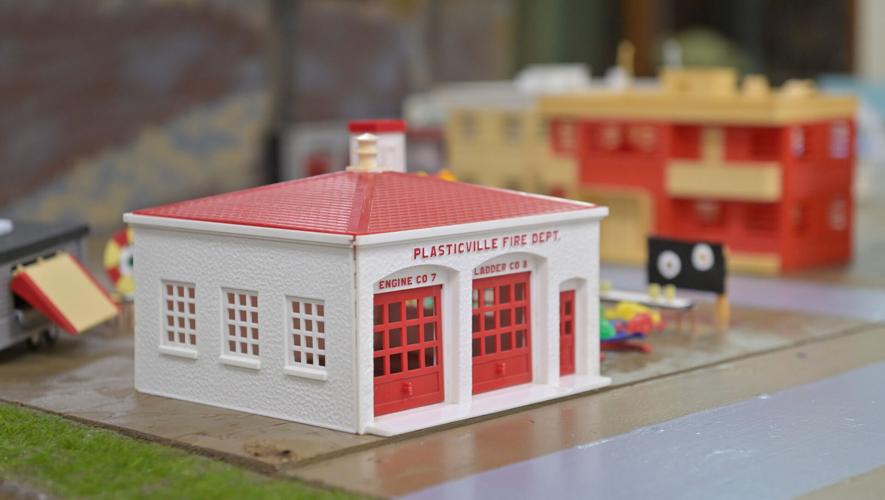




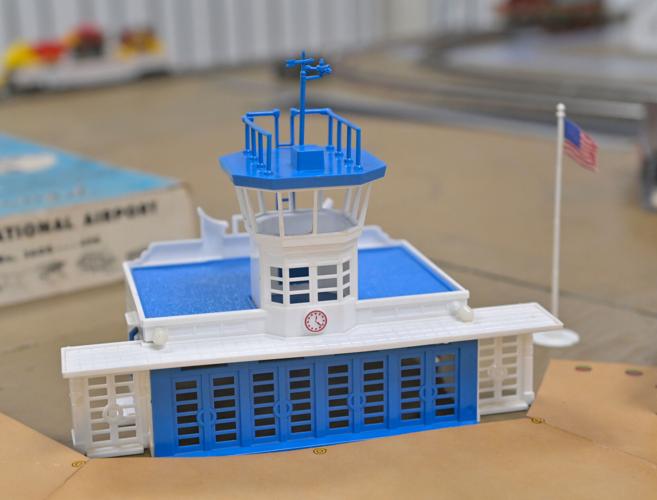

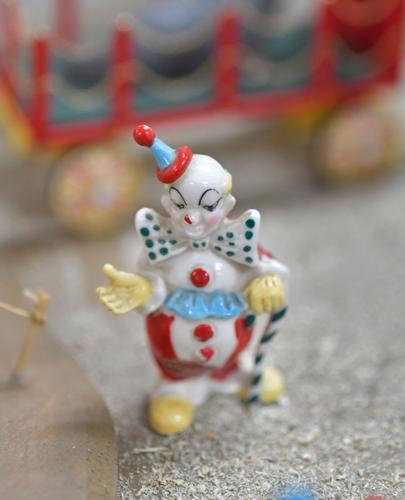

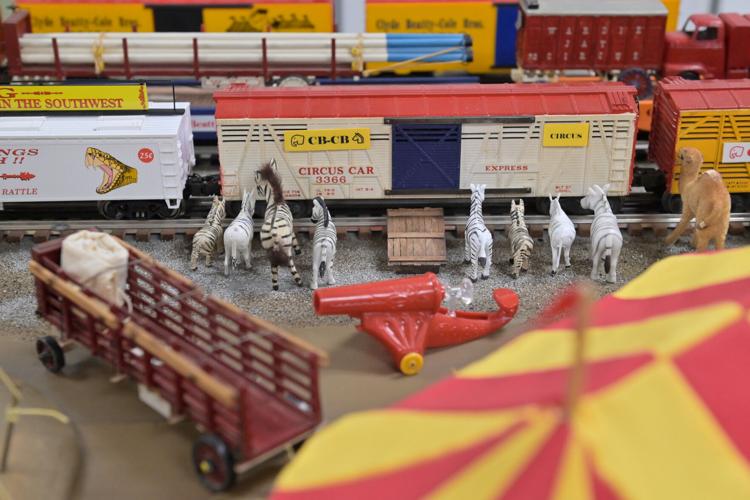





 JENELLE JANCI | Staff Writer
JENELLE JANCI | Staff Writer


